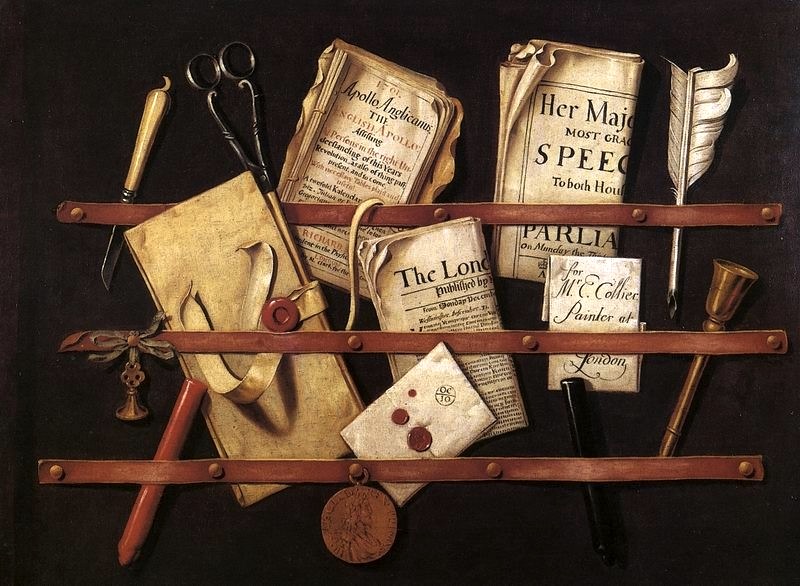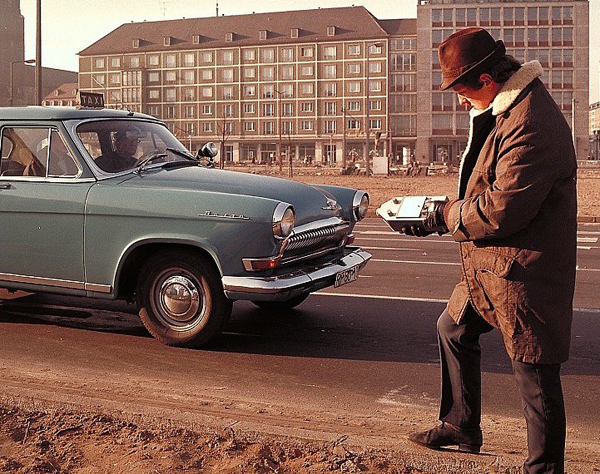There are Abouta lot of mysteries on HBO these days. Even when a show isn’t about getting to the bottom of crimes or catching murderers, the interactive element of getting an audience to “solve” what’s happening onscreen is a vital part of the entertainment landscape. Look at Westworld, a show that has ten times more mystery than it actually has plot, or Game of Thronesand its hundreds of fan theories, or Sharp Objectsand its laundry list of dead little girls.
SEE ALSO: 'True Detective Season 3' review: Thank god, it's really good againAt the center of these is True Detective, a show that is outwardly about mystery but in its three seasons has used the framework of crime to explore the interiority of its characters and the effects that One Big Case had on their lives. Most of the characters in previous seasons are left worse off by the time their story is done, which tracks as far as they’ve been dealt awful hands and witnessed terrible things. But True DetectiveSeason 3 did something different. It gave its characters, all of them that are still alive, a happy ending.
Episode 8 “Now Am Found” fakes it audience out by first delivering a more classically True Detective-y ending to the case of Julie Purcell. She was kidnapped by Junius Watts (the man with the milky eye) and held prisoner as a replacement daughter for the mentally unstable Isabel Hoyt. Her brother was killed accidentally when Isabel fought with him in the woods, and Julie was given lithium to numb the pain of her brother’s death and further accept her imprisonment. One night, Junius helped Julie escape with the intention of meeting her at a secret location, but she lost her map and wandered out into the world, where she contracted HIV and worked alongside nuns at a convent before succumbing to her illness.
Roland and Wayne get this story from Junius Watts himself, who has given up his life in search of Julie. After he confesses, he begs the former detectives to take him in or shoot him, because he can’t live anymore knowing that he lost Julie forever. They don’t have the authority to arrest him and don’t want to kill him either, so they leave him a broken man. Watts is left to live or die on his own time, and the detectives have their answers.
Well, almost. This is True Detective, and here was always going to be another shoe to drop.
Wayne realizes that Watt’s story might not be what actually happened. Julie may have gone to the nuns and gotten the help she needed to overcome the trauma of her kidnapping. She may have reconnected with a childhood friend who recognized her while landscaping at the convent and fallen in love. It’s possible she asked the nuns to fake her death, complete with a gravestone, and become a wife and mother in a pretty house in a town a few hours away. That’s another way the story could go. And that’s the way it did.
When Wayne finds out Julie’s husband’s address and drives out to see if he’s right, he is greeted by the sight of a grown-up Julie, safe and happy with her daughter in their garden — and due to his dementia, is unable to recognize her for who she is. He comes to her, the person he’s been searching for half his life, and only thinks to ask her help in getting back home.
At one moment in his interaction with Julie, a shift in Wayne’s gaze implies that he does remember her. It’s the kind of eye-acting that earned Mahershala Ali his Academy Award on the day this finale aired, and he seems to allow the recognition to wither away before it grows too strong. Wayne chooses not to interrogate Julie Purcell in that moment, honoring her right to be forgotten, as he surely will forget.
Wayne chooses not to interrogate Julie Purcell in that moment, honoring her right to be forgotten, as he surely will forget.
True Detectivehas always been about solving the case, but the fact that Wayne might never know he solved it is a fascinating twist that puts his character’s journey into a new perspective.
The Purcell case affected so much of Wayne and Roland’s lives. It brought them closer together and tore them apart. It derailed Wayne’s career and sent Roland careening towards rock bottom. It threatened Wayne’s marriage and killed just about everyone else who was tangentially involved. And at the end, the only choice both detectives have was to put it down and move on.
After Wayne returns home with his daughter, he has a pretty great day. There’s iced tea and sunshine and a dog. Roland comes over and joins his family for dinner, and the two old men sit together as friends for the first time in over a decade. Wayne is still losing his memories to dementia and Roland is still a gruff dog hoarder, but the case is in their rearview mirror and their lives once again belong to them.
This theme of putting the case down is echoed in Wayne’s other flashbacks in the final episode, which go back to the two times he let it get in the way of his relationship with Amelia. The first time the case interfered with them, they fought, made up, and married. The second time, after Wayne is driven to murder Harris James and refuses to tell Amelia what happened, they both decide to put the case (and Amelia’s second book) behind them and move on together.
Those periods of forgetting the Purcells brought on some of the happiest times in Wayne’s life: His marriage, the birth of his children, and his final years with his wife. When he solves the case and returns to his family and Roland, he is making the same choice he made twice before, to get over it and focus on his own life. Just like Julie Purcell did when Mike Ardoin showed up at her convent.
There are only two options when it comes to a harrowing case like the dead and missing Purcell children. You can let it consume you, as Junius Watts did, or make a choice to stop thinking and life your damn life. The fact that True Detective’s finale prioritizes peace over answers is a rare sentiment in an even rarer crime TV show.
 Tesla Model S and X get significant price drops
Tesla Model S and X get significant price drops
 Material Objects by Benjamin Breen
Material Objects by Benjamin Breen
 Sharing Economy
Sharing Economy
 What it's like to dance at a VR strip club
What it's like to dance at a VR strip club
 Globalization in Germany
Globalization in Germany
 Wordle today: Here's the answer and hints for September 1
Wordle today: Here's the answer and hints for September 1
 Amazon Book Sale: Shop early deals now
Amazon Book Sale: Shop early deals now
 A Sentence by Robert Walser
A Sentence by Robert Walser
 NYT Connections hints and answers for April 26: Tips to solve 'Connections' #685.
NYT Connections hints and answers for April 26: Tips to solve 'Connections' #685.
 Facebook, Instagram are back, and Twitter has thoughts
Facebook, Instagram are back, and Twitter has thoughts
 The Morning News Roundup for October 29, 2014
The Morning News Roundup for October 29, 2014
 Taylor Swift's 'Eras Tour' is coming to theaters: Here's how to get tickets
Taylor Swift's 'Eras Tour' is coming to theaters: Here's how to get tickets
 The enduring appeal of what are you listening to videos
The enduring appeal of what are you listening to videos
 Viral TikTok Buffalo cauliflower wings are pretty good, but not worth the work
Viral TikTok Buffalo cauliflower wings are pretty good, but not worth the work
 How to change your Twitter handle and display name
How to change your Twitter handle and display name
 Best Amazon deal: Get a $5 Amazon credit when you spend $30 on home essentials
Best Amazon deal: Get a $5 Amazon credit when you spend $30 on home essentials
 Tesla launches new Model 3. Here's what's new.
Tesla launches new Model 3. Here's what's new.
Relive your childhood with this Dr. Seuss coloring bookKim Kardashian being robbed costume is just as bad as you imagine'League of Legends' pro suspended, fined $2K for using racist languageAmazon is using credit card tactics to hook college students on Prime13 moving coming out vlogs to watch on National Coming Out DayRock out to this fluffy floating cloud bluetooth speakerYoung mothers in Senegal use art to tell their stories of abuse and resilienceTiny kitten wears tube sock sweater after surviving Hurricane MatthewZika cases expected to soar in AsiaMix it up this Halloween with a pineapple jackClimate activists shut down 5 tar sands oil pipelinesKim Kardashian being robbed costume is just as bad as you imagineGoFundMe campaign will pay legal fees of anyone leaking new Trump tapesTwitter is vying for your attention with new outdoor adsTwitter is vying for your attention with new outdoor adsMix it up this Halloween with a pineapple jack'Finding Dory' swims its way to $1 billion worldwideDriverless cars, electric vehicles and mass transit could transform citiesAussies want driverless cars for when they're tired, bored or drunkHey Samsung, are the replacement Galaxy Note7's safe or not? Illuminate I Could: On Lucille Clifton by Tracy K. Smith Moral Suasion by The Paris Review Redux: Backwards and Upside Down by The Paris Review Redux: Collapse Distinctions by The Paris Review A Swift Arrow’s Flight by Susan Choi Wild Apples by Lauren Groff Redux: Some Instants Are Electric by The Paris Review Tree Time by Sumana Roy Staff Picks: Melancholia, Music, and Meaning by The Paris Review Eternal Present by The Paris Review Thanksgiving with John Ehle by Valerie Stivers Redux: The Subway Back and Forth by The Paris Review #nyc #adayinmylife by Taylore Scarabelli Take Place by Terry Tempest Williams A Holy Terror Dancing with Light: On Jim Harrison by Joy Williams Redux: Too Sweet a Muddle by The Paris Review Walking with Simone de Beauvoir by Annabel Abbs The Chorus by Barbara Bloom and Ben Lerner Redux: Chance Progression by The Paris Review The Novels of N. Scott Momaday by Chelsea T. Hicks